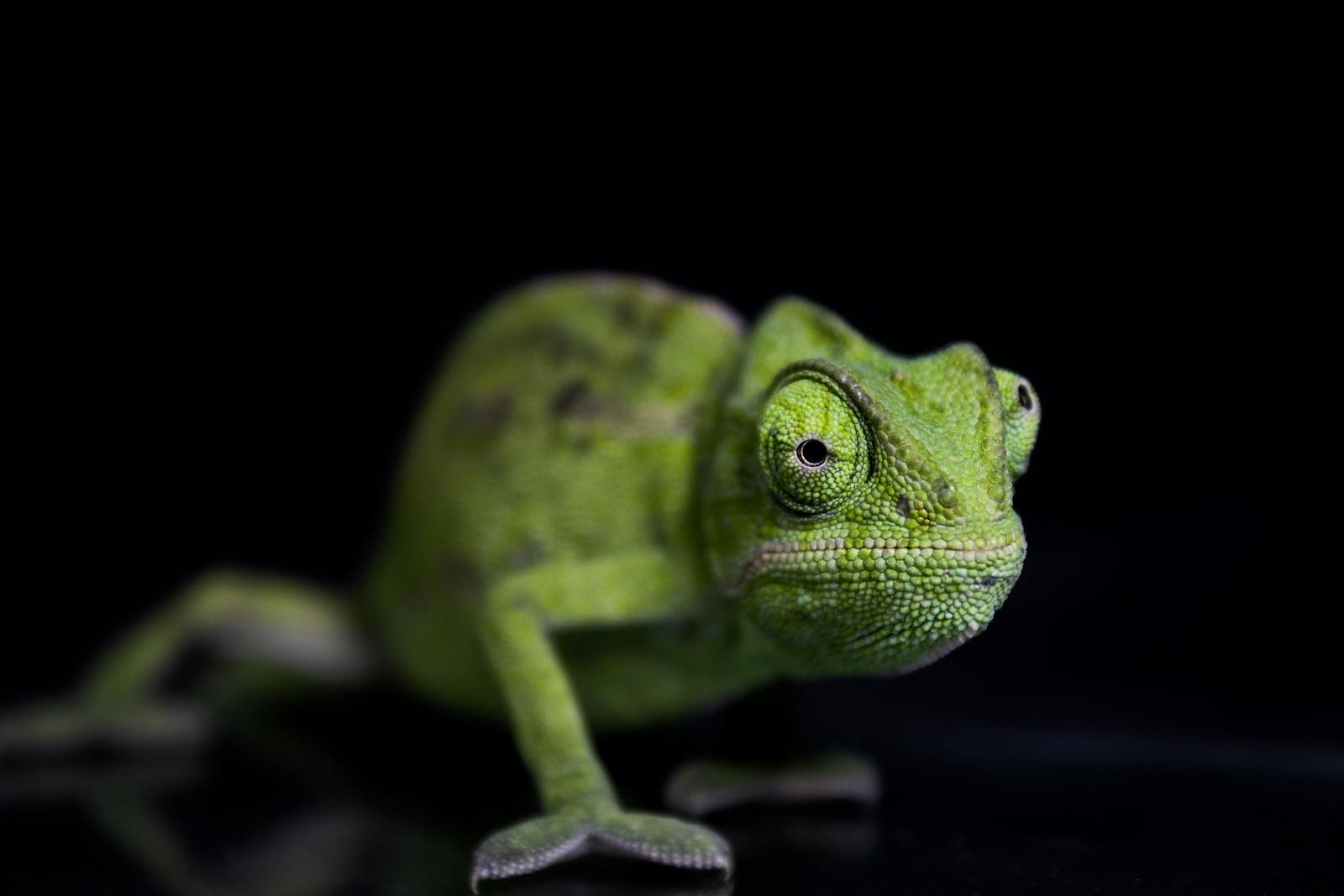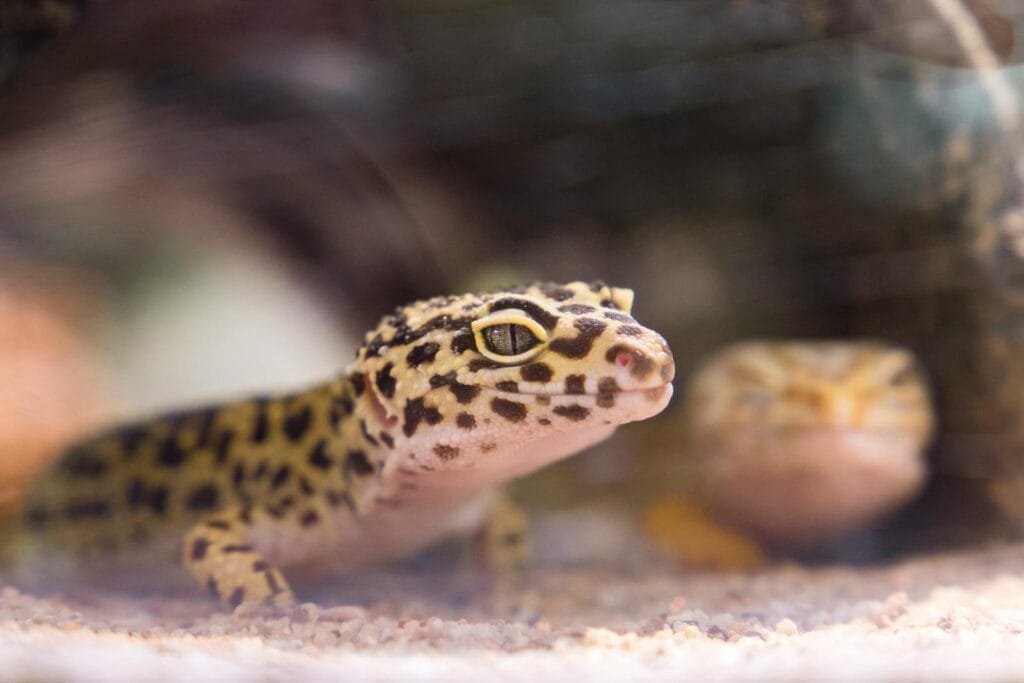
Geckos are wonderful introduction reptiles due to their uniqueness and low-maintenance nature. Geckos are a great way to go for beginner reptile enthusiasts, and with their wide range of species, cool appearance, and easy-to-meet care needs, pretty much everyone would end up loving them. This guide will take you through everything you need to know about keeping a pet gecko… from choosing the best species for you, to preparing their home and looking after them correctly.
Why Geckos Make Great Pets
As low-maintenance reptiles, geckos are also among the easiest to care for and handle. They are famed for their unique appearance, which in some species involves bright colors, intricate patterns or even “sticky” toe pads so they can scale vertical surfaces. Because of their shy and nocturnal nature, they are adaptable to a wide array living situations.
Here is list of few reasons why geckos are the best pets
Minimal Maintenance: They are not very space or daily care demanding.
Quiet: Geckos are really quiet pets, so they make more sense for someone who wants a silent creature.
Different Species: Numerous geckos are available with specific care requirements and characteristics.
Live for Longer: Most species of gecko can live 10-20 years with care.
Top Pet Gecko Species
While most geckos are easier to care for than other reptiles there are some species that do require different levels of care, so make sure to choose a species that is right for you and your level of experience. It is a list of one type of popular gecko species which are most kept at home as pets.
1. Leopard Gecko (Eublepharis macularius)
Size: 8 to 10 inches
Lifespan: 15 to 20 years
Personality: Laid back, Friendly and easy to handle
Experience Level: Beginner
Need: Dry, Desert Edge Habitat
Why They’re Awesome: Leopard Geckos are one of the most popular gecko species for beginners. They are calm, low-maintenance creatures that do not need fancy humidity or lighting setups. Most of their diet are insects such as crickets and mealworms, so this should be easy to feed.
2. Crested Gecko (Correlophus ciliatus)
Size: 7 to 9 inches
Lifespan: 15 to 20 years
Personality: Friendly, handling-tolerant
Difficulty Level: Novice to Advanced
Habitat Requirements: Steamy, Tropical Setting
Why You’ll Like Them: They make for a really great pet due to their pretty looks and long tails (complete with eyelashes!) They are low-maintenance and need not have live insects each day as they can flourish on powdered diets specially made for baby Leachianus Geckos. However, crested geckos do require higher humidity, so their habitat should be mist more often.
3. Tokay Gecko (Gekko gecko)
Size: 10 to 14 inches
Lifespan: 10 to 15 years
Temperament: Aggressive, not a good pet species
Experience Level: Advanced
Natural Habitat: Tropical, high humidity
What Makes Them Cool: Tokay Geckos are considered to be one of the most visual stunning geckos due to their vibrant blue and orange color. That being said, they can be great pets, but only if you are an experienced reptile owner as they are relatively defensive and a little aggressive. They need high humidity and a vertical surface to climb on.
4. African Fat Tailed Gecko (Hemitheconyx caudicinctus)
Size: 7 to 9 inches
Lifespan: 15 to 20 years
Temperament: Calm, friendly
Experience Level: Beginner
Type Of Habitat: Dry, humidity mediumMost Active At: Night Time
Why This Group Is Great : African Fat-tailed Geckos are another fine choice for newcomers who want to keep leopard geckos. Handle well, simple to cage and and a calm temperament
5. Gargoyle gecko (Rhacodactylus auriculatus)
Size: 6 to 8 inches
Lifespan: 15 to 20 years
Character: Being very boisterous and happy to mollify.
Habitat Requirements: Humid, rainforest conditions
Why These Guys Are So Awesome: Gargoyle geckos are fantastic, out-of-the-ordinary pets with the most fascinating “horned” look. They are also found in a similar region to crested geckos and thrive on powdered diets and high humidity. The beagle draws the characteristic of liking to be handled and not minding interaction with owners from its hard working fathers.
Creating the Right Environment for Your Gecko
Habitat Creation is Essential to Good Health in Your Gecko
Gecko care: the must haves of a gecko enclosure
- Enclosure Size
Geckos do not require much space, but the species determines what size enclosure you will need:
Huge #leopard and African Fat-Tailed Geckos: A 10–60 gallon tank should be fine for one grown-up.
Crested & Gargoyle Geckos: A vertical 20 gallon tank is best as these geckos love to climb.
Tokay Gecko: These are larger geckos that are more active — put them in a tall enclosure instead.
- Substrate
The flooring substrate (flooring material) you choose must replicate the natural setting of your gecko. For example:
Leopard Geckos: Sand, reptile carpet or paper towels. Angled corners to prevent them from burrowing.
Crested and Tokay Geckos: Coconut fiber or moss to keep moisture in the air
- Temperature and Heating
Being cold-blooded, most geckos also require the heat of an external source to regulate their body temperature. Ensure that the tank has a warm side and a cooler side with the use of heat lamps or under-tank heaters.
Leopard Geckos: 75-85°F during the day, with warm spots of around 90°F.
Crested Geckos: 72-80°F during the day, and no heat is necessary if temperatures are within this range.
- Humidity
Most tropical gecko species need a great deal of humidity:
Leopard and African Fat-Tailed Geckos: 30-40% humidity
Crested, Gargoyle and Tokay Geckos: 50-70%Humidity.
Spray enclosure once a day or utilize a humidifier to keep proper moisture levels.
- Hiding Areas and Climbing Branches
Gecko’s best friend is their hiding & climbing toys. Include rocks, logs and plants to allow your gecko many places for exploration and to hide in. Crested and gargoyle geckos are both arboreal species and need vertical structures.
- Lighting
Nighttime basks: No UVB is needed; many geckos are nocturnal. That said, if you have a diurnal or UVB-dependent species of gecko (which is very few), a low-level UVB bulb may be warranted.

Feeding Your Gecko
What Do Geckos Eat? — Species By Species
Leopard and African Fat-Tailed Geckos: Insectivores, most eat crickets, mealworms, and the rare waxworm.
Crested and Gargoyle Geckos: Will do great on specially formulated powdered diets made by a number of manufacturers, mixed with water, and the occasional live insects such as crickets.
Tokay Gecko Carnivore and they should be fed with live insects like crickets, roaches, mealworms.
To avoid any nutritional deficiencies, always dust the insects with a calcium supplement
Care Tips & Handling with Your Gecko
Some breeds of housing gecko quite like to be handled, and some others prefer minimal interaction. Leopard, crested and Gargoyle Geckos typically do better with handling. Still; you should always handle your gecko with care and let it get used to you gradually. Remember to never pick up or hold a gecko because the stress and pressure may cause harm to the gecko.
Conclusion
Geckos are amazing pets that can be a lot of fun and also fairly low maintenance. If you are considering a gecko species for the first time or hoping to grow your collection, there is one that suits your needs. If you select a good species and give it the right care, you should be enjoying your new gecko (or two) for many years to come! For more pet care tips and guides, Keep exploring petsfunzone.com!
- Tags:
- beginner’s guide to pet geckos
- best geckos for beginners
- best pet gecko species
- choosing the right pet gecko
- gecko breeding tips
- gecko care essentials
- gecko diet and nutrition
- gecko enclosure maintenance
- gecko feeding tips
- gecko habitat setup
- gecko lifespan and health tips
- gecko lighting and heating requirements
- gecko tank setup
- how to care for a pet gecko
- how to handle a pet gecko
- how to tame a gecko
- pet gecko behavior explained
- pet gecko care guide
- what do pet geckos eat
- where to buy pet geckos



